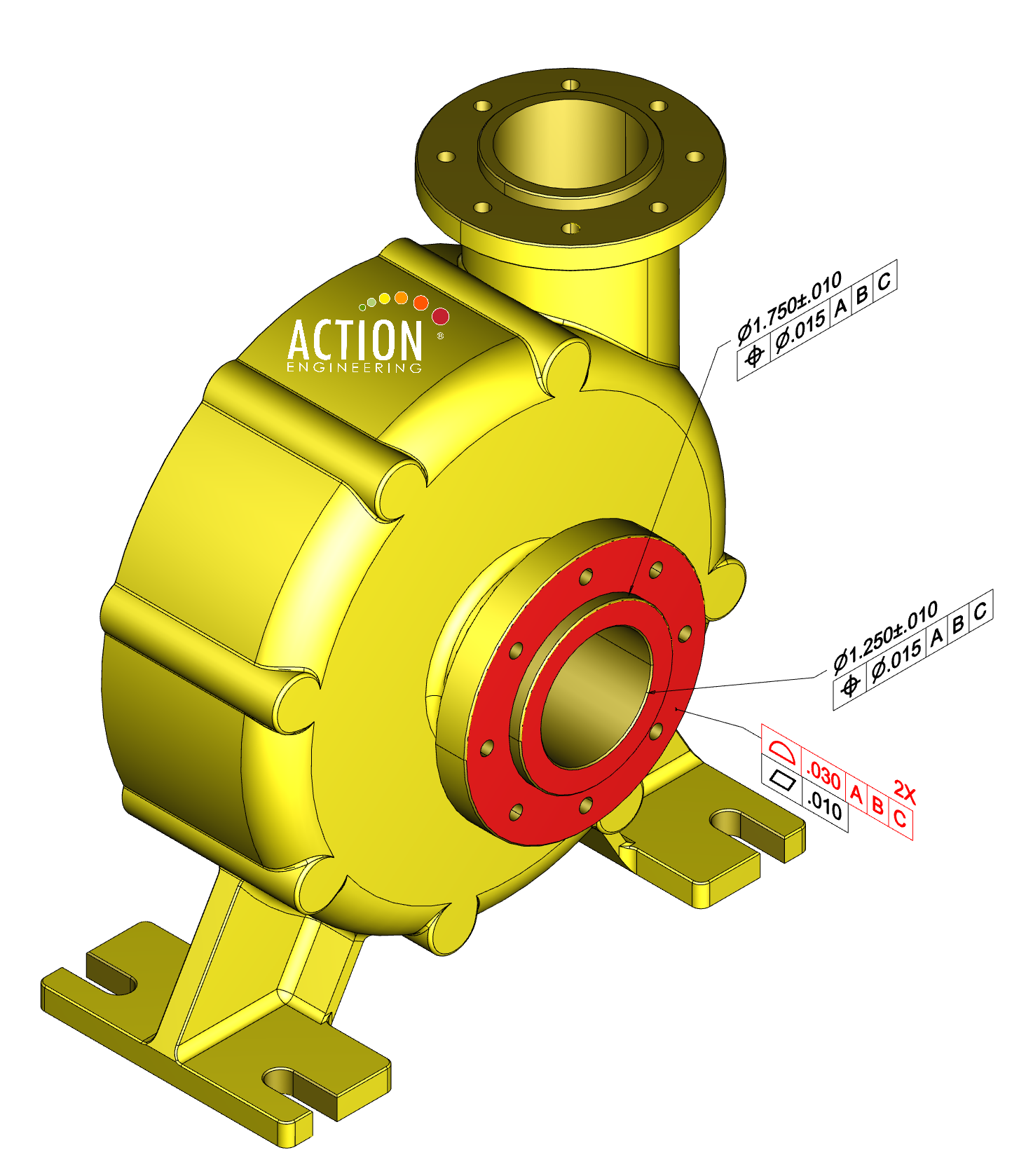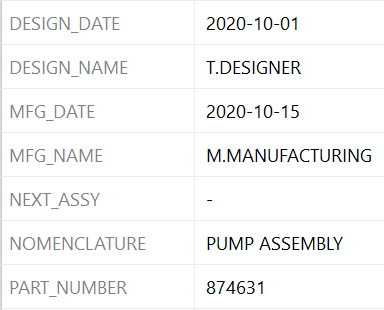______ END ______
| Model-Based Characteristics (MBC) - Persistent Identification and Related Digital Practices | Reference | 2024 |
| 3D Model of a physical item that is generated using drafting and design software. |
| Visible dimensions, tolerances, notes, text, or symbols. |  |
| A dimension, tolerance, note, text, or symbol required to complete the product definition or feature of the product that is not visible but available upon interrogation of the model. |  |
| a control placed on an element of a feature such as its size, location or form, which may be a specification limit, a nominal with tolerance, a feature control frame, or some other numerical or non-numerical control. |
| An item of specialized supplemental information associated with a characteristic such as Criticality Classification, Product Requirement Associations, or Verification Plan Requirements. |
| A designator that labels a characteristic augmentation from its attributes. |
| A designator that labels a characteristic with its tag. |
| A tag used for a characteristic. |
| A designator that labels a characteristic augmentation from its attributes. |
| A characteristic that analysis indicates is likely, if defective, to create or increase a hazard to human safety, or to result in failure of a system to perform a required function. |
| A characteristic augmentation that optionally designates a criticality. |
| A designator that labels a Criticality Classification. |
| A requirement that address a customer's expectations for the functionality, performance, and quality of a product being developed. |
| A means to identify and set apart for a specific purpose. |
| A model that is digitally represented. |
| A characteristic, which is presented on a graphical drawing. |
| A Product Characteristic, which is supplemented by a Product Requirement Association augmentation. |
| The condition of a derivative being embellished from its source with respect to an intended use. |
| The condition of a derivative being functionally equivalent to its source with respect to an intended use. |
| A tag used to identify a geometric feature, face, or element. |
| A characteristic tag used for a non-product characteristic or general usage. |
| The portion of the data set that contains model geometry and supplemental geometry. |  |
| A characteristic, which is represented within a model-based definition model. |
| An annotated model and its associated data that define the product in a manner that can be used effectively without a drawing graphic sheet. |
| A characteristic, which is created to identify an operation or process requirement for the product realization process of a product or of a feature of a product. |
|
[Primary] Any information that defines the physical or functional characteristics of a product, to ensure the design intent.
[Alt] The activity that defines a process that realizes a product. |
| A tolerance or specification applied to a feature or product that requires verification. A characteristic has a local designation identifier(s) and may have a criticality associated with it. |
| An identifier, which is used as the basis for both a Product Characteristic Reference Identifier (i.e., Tag or UUID), and a Product Characteristic Instance Identifier. |
| An optional identifier that is concatenated with a Product Characteristic Base Identifier, which uniquely identifies a Product Characteristic Instance Identifier. |
| An identifier (i.e., Tag or UUID), of an instance of a Product Characteristic Reference Identifier, which combines a Product Characteristic Base Identifier with an optional Product Characteristic Extension Identifier. |
| A product characteristic tag used as an instance identifier. |
| An identifier (i.e., Tag or UUID), which references a verification requirement annotation as a Product Characteristic, which contains the Product Characteristic Base identifier. |
| A product characteristic tag used as a reference identifier. |
| A characteristic tag used for a product characteristic. |
|
[Primary] Any information that defines the physical or functional requirements of a product, to ensure design intent.
[Alt] The activity that defines a product. |
| A requirement that address a product's purpose, its features, functionalities, and behavior. |
| A characteristic augmentation that optionally relates a product requirement to a characteristic. |
| A designator for the Product Requirement Association. |
| 3D annotations (dimensions and tolerances), metadata, notes and attributes needed to define the product beyond the 3D geometry. |
| A characteristic, which is created to identify a service or maintenance requirement for the sustainment of a product or of a feature of a product. |
| A digital element identifier used as a human-readable identifier, unique within a local context. |
| A digital element identifier used as a persistent machine-readable universally unique identifier. The UUID should be generated according to the ISO/IEC 9834-8 standard. |
| A Product Characteristic, which is supplemented by a Verification Plan Requirement augmentation. |
| A characteristic augmentation that optionally relates a verification plan requirement to the characteristic. |
| A designator for the Verification Plan Requirement. |
| A requirement (e.g., tolerance, specification) applied to a part feature or product, which requires verification to assure product acceptance. |